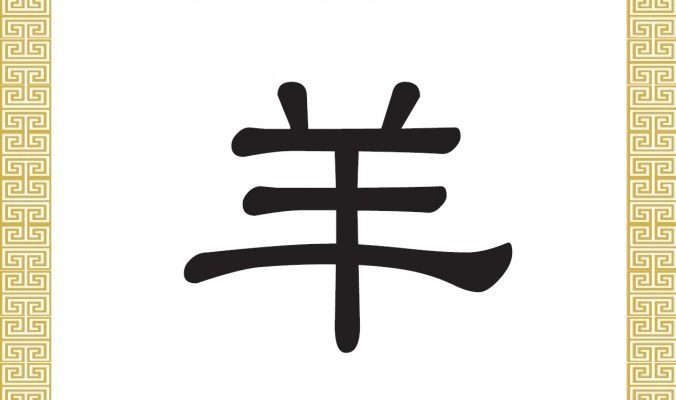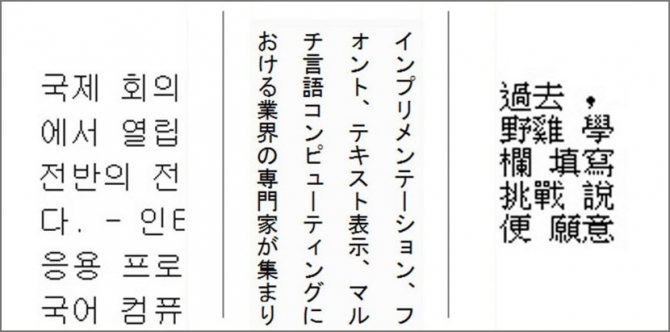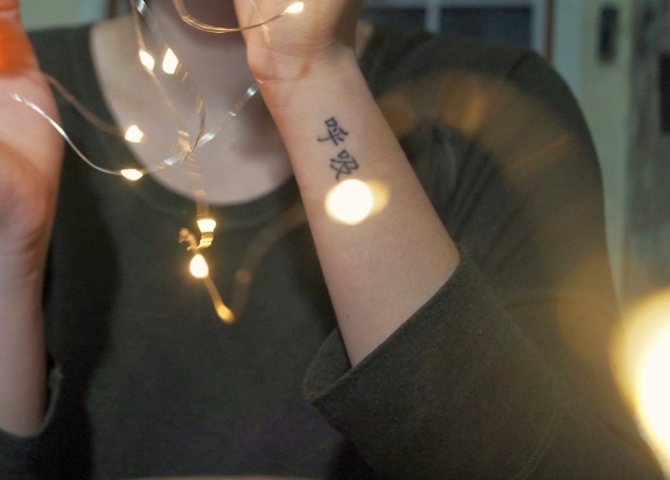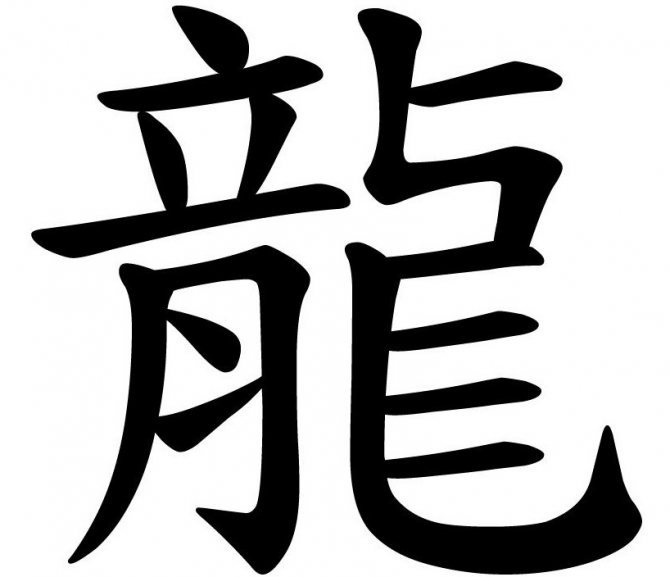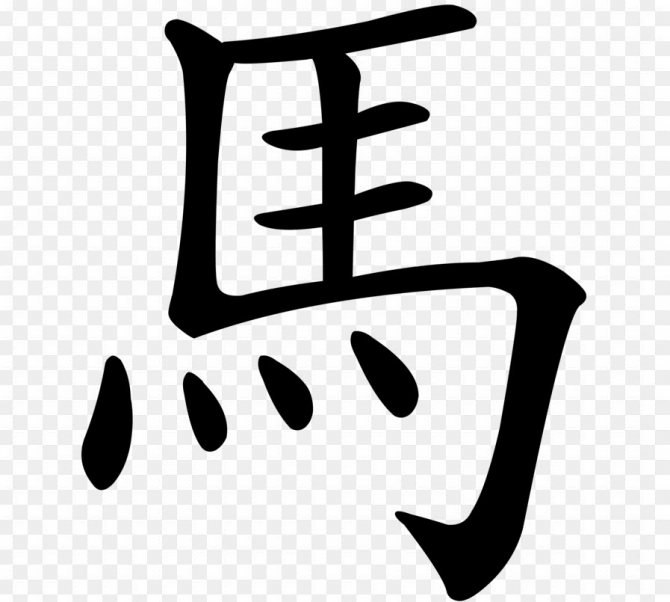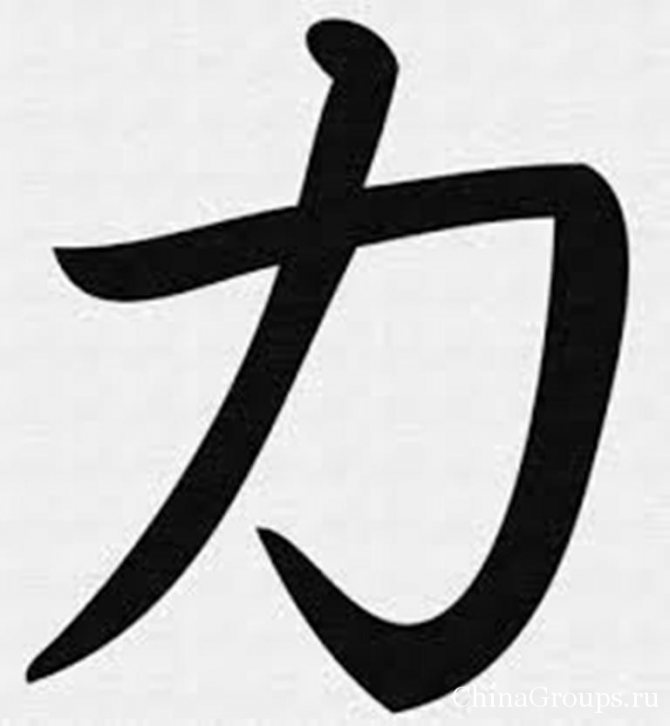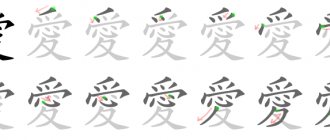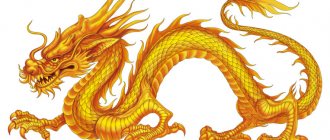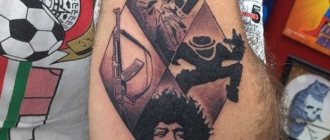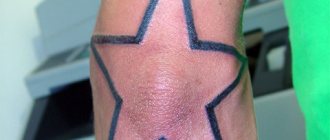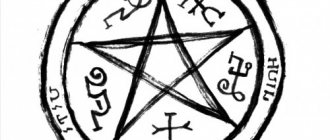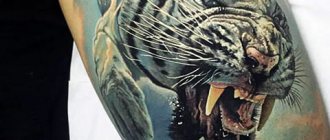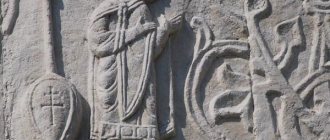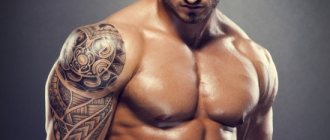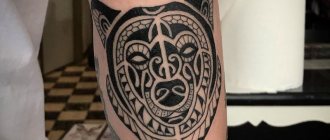Chinese and Japanese characters always carry meaning, reflecting the individual meaning and purpose. Inhabitants of these Asian countries endow each such symbol with a special energy in order to get the desired result and to make their own dreams come true.
An important character in Japanese and Chinese writing is "power," which is of great importance to the inhabitants of China and Japan. These symbols in both countries are considered to be auspicious and happy, but it is necessary to use this sign carefully, so as not to disturb the energy balance.
The peculiarities of Chinese symbols
The hanzi is the most mysterious and amazing form of writing. Each hieroglyph has its own history of origin, a mystical component. The writing (drawing) of the sign is strictly limited by the rules, traditions, the elements of the image are written clockwise, the large horizontal components are drawn first.
Beautiful Chinese writing (calligraphy) is an art that can inspire and uplift emotions, bringing inner energies into equilibrium.
A graphic symbol, written by a master, is not only a work of art, but also a magical artifact.
Japanese Characters for Women
Japanese characters for tattoos are of great interest for women as well. These images are the best option. After all, it is not typical for girls to apply too large and visible tattoos, and similar symbols look beautiful and stylish on both open areas of the body and closed from prying eyes.
For example:
- love;
- family, home;
- fidelity;
- soul;
- eternity;
- dream;
- happiness;
- beauty;
- sea.
Power in Chinese.
Each sign contains a life resource, a meaning, a fateful role. Strokes of a thick brush on parchment are full of energy helping in all areas of life.
The prototype of a "strong" character was a plough. Some sources interpret the dynamic image as a "powerful hand.
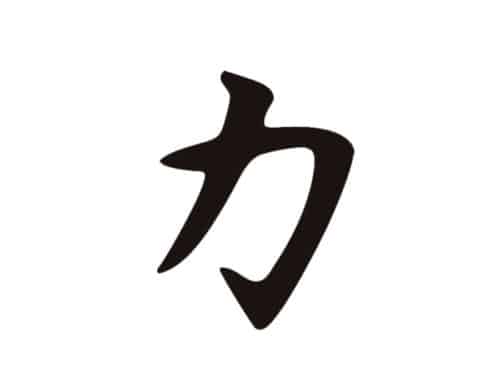
The sign of "strength" depicts the power of the spirit, power and determination.
In the dictionaries, the symbol is listed as number nineteen. Together with its basic semantics, the character implies:
- power;
- determination;
- ability;
- violence;
- diligence.
The graphic symbol serves as a talisman
Fetishes bringing happiness, prosperity, health, harmony - a completely separate world. Experts do not recommend using signs with different interpretations: such symbols can enhance natural conditioning, but can also weaken some of them. Absolute confidence, understanding, and clear awareness of interaction with the pentagram are necessary. Subtle nuances and interpretations are important.
An inhabitant of a modern metropolis who prefers an active lifestyle, who needs vitality and dynamics can choose the sign "Power" as a talisman. The Chinese mystical tradition considers the "Force image" an accumulator of physical health, a stabilizer, a character booster. Supporters of "Force" are confident individuals, full of plans, ideas, desires.
"Force" is ideal for athletes, businessmen, financiers and people of creative specialties. The magical carrier of the sign infuses the owner, "spreads wings", stimulates, supports, leads to new heights.
Place a "strong fetish" in an accessible place, in sight. The best amulet functions in feng shui dislocations of career growth, prosperity and success (north, southeast).
The logo "Power" in Japanese
The generally accepted theory is that Chinese texts were brought to Japan by Buddhist monks. Japan at the time did not have its own script and successfully assimilated Hanzi.
Initially, the kanji and hanzi were mirrored: the Celestial Empire's graphic characters were used to record the text of the Land of the Rising Sun. Today there are differences between hanzi and kanji: some new signs were born in Japan itself and some have changed their meaning.
The basic signs are unchanged, the same for the two Asian countries.
The Japanese character for "Power" is absolutely identical to the Chinese one. In Japanese, the pictogram is read as "tikara".
Composition and color scheme
Japanese characters for tattoos are usually executed in black. But still there are symbols using the five primary colors, each of which carries a certain meaning.
| Color | Meaning |
| Blue-green | In Japan, this is one color that is denoted by the word "aoi". It represents the wind and is considered the most volatile element, which can embody both the tranquility of the sky and trees, and the destructive power of a hurricane. |
| Red . | A symbol of fire, the sun, energy and development. In the opinion of the Japanese, this color protects against evil and brings joy, tranquility, good luck to the home. |
| Yellow | Associated with land, gold, constancy and prosperity. |
| White | The most controversial in the Japanese color palette. The color of white represents both mourning and preserving from the other world. |
In tattoos, the above-mentioned shades are used to give more expression and energy. For example, to enhance its auspicious meaning, the character is encircled with a red line. You can make a tattoo unusual and original by carefully inscribing the symbol in a pattern or image.
Other words in Chinese
Even at the beginning of the twentieth century, throwing away pictograms was considered harmful and inappropriate. Outdated books, leaflets, posters were organizedly burned with observance of ritual norms and rules. The Chinese believed that this was how they returned the mystical component of the sign to heaven.
"Benevolent characters" are a type of sacred symbolism, the base of an ancient tradition.
Tiger
The gracefully predatory Tiger, who overcomes all inhibitions, is highly revered in China. "The tiger is interpreted as valor, strength of spirit, supremacy in all things.
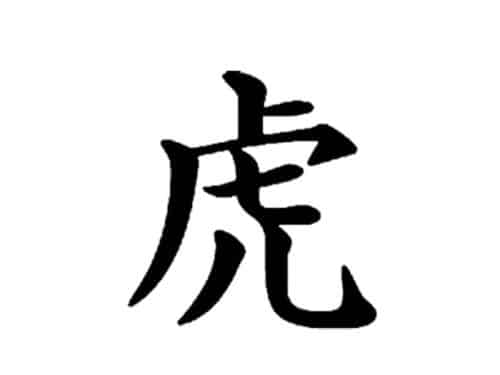

In some imagination in the sign seen grinning mouth and clawed paws striped animal.
The sign of the tiger is often used in proverbs, sayings and idioms: "the fox practices the power of the tiger," "riding the tiger, it is difficult to jump off of him.
Water
In the image of the ancient pictogram, the turbulent river ripples and the backwaters of the river stream can be clearly traced.
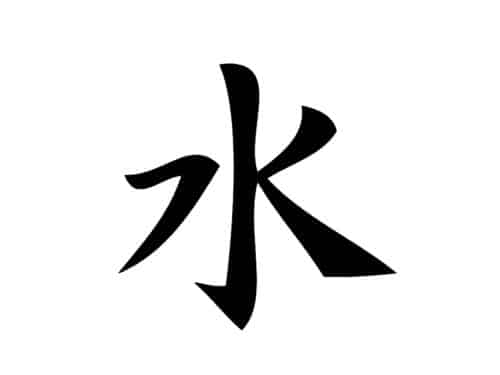

The hieroglyph "Water" is the strongest key sign.
On its own, the hieroglyph means: "water", "river", "lake".
Harmony
Symbol of the ideal, the target of the correct development of personality, the highest sense of representation of the relationship between man and nature, translated from Chinese.
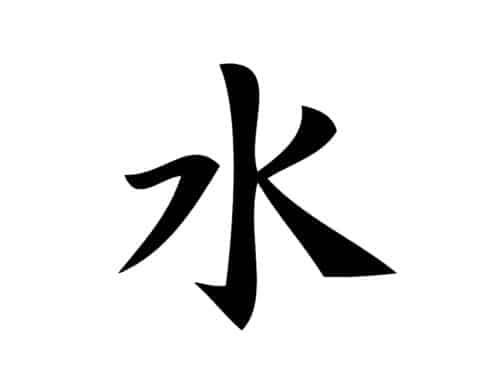

"Harmony" is the central sign-mascot of feng shui practice.
This character bestows balance and order, responsibility and diligence, respect and the ability to understand oneself and others.
Tree
Individually, the character carries two meanings: wood is a plant and wood is a material.
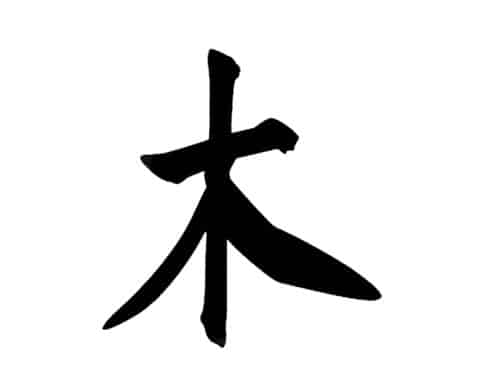

The hieroglyph "Tree" depicts a crown with leaves and roots.
"Tree" is a common sign. It is difficult to find an area of human activity that does not mention a plant or wood.
Friendship
The image of the sign symbolizes a handshake, sympathy and togetherness of people. A friend shaking hands with a friend.
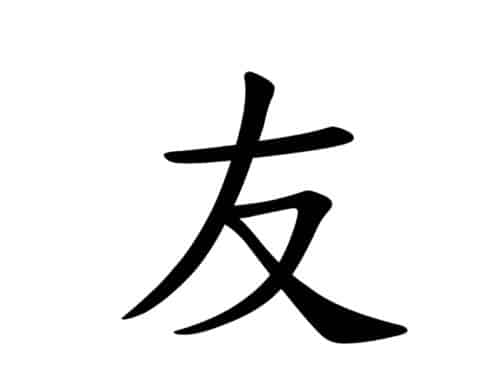

Sign "Friendship" is popular in China, Korea and Japan.
Together with other characters, the sign "Friend" can carry a lot of different meanings.
Crisis
In modern Chinese writing the term "crisis" is depicted by two signs: danger (doom, trouble) and occasion (opportunity).
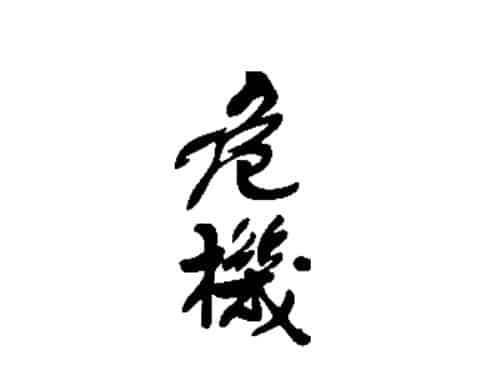

The famous and very meaningful "Crisis".
The first pictograph, "wei", means "perilous times". The next after it "ji" - "given chance.
Humility
Sign of "zhen" - patience, endurance. Upper part: the knife. Bottom half: heart.
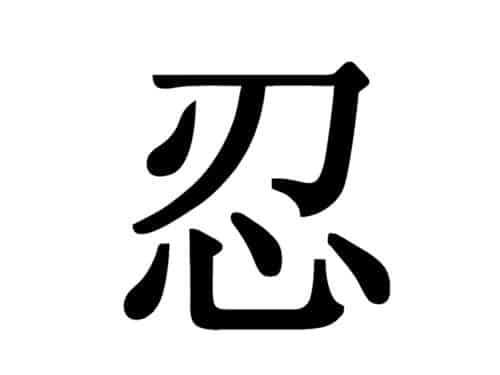

Pierced, but not defeated heart.
Faced with spiritual hardships, a person holds back, does not give anger overwhelm the tormented heart.
Luminary
The first sign in a school primer. First graders of the Celestial Empire start studying the written language of the country.
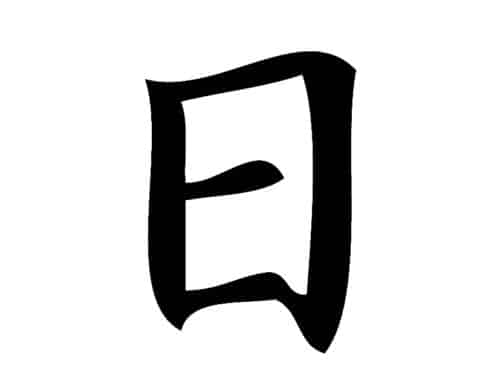

Without the hieroglyph "Sun" it is impossible to write the word "Japan".
The symbol is very popular in feng shui practices.
Faith
Shifting mountains, forever tested for strength and always victorious Faith.


"Faith" symbolizes truthfulness, fairness and honesty.
Very popular with young lovers sign.
Expectation of good things to come.
"Hope" is more of a dream, a premonition of good fortune.
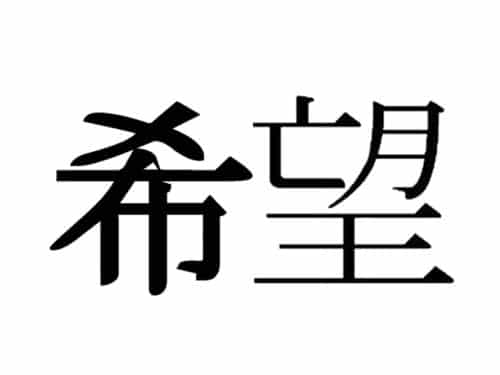

The character "Hope": to hope, to count on, to rely on.
The symbol keeps on the edge of despair, helps keep hope alive and make plans, goals, dreams come true.
Kindness
The top of the symbol: "sheep." The basement of the symbol means "conversation." The literal meaning of the character: "bleating sheep".
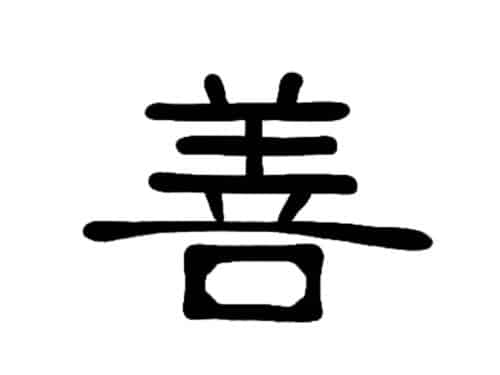

A strange interpretation: "good" in Chinese.
The meeping of the sheep is unkind and peaceful. The sounds of non-aggressive pets, symbolize the concept of kindness.
Vitality
This sign celebrates all the diversity and versatility of everyday life.
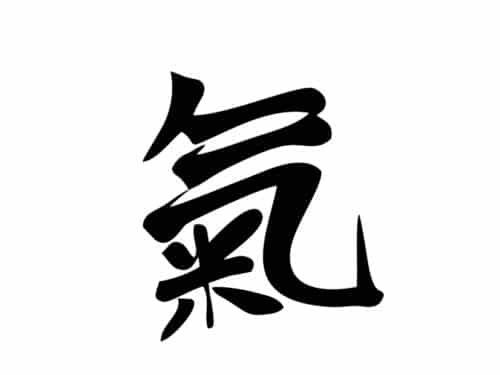

The key feng shui character.
According to ancient beliefs, in order to solve all problems and lead a peaceful, harmonious life, it is enough to depict a hieroglyph on your own.
What does the localization of the tattoo say: on the leg, arm, shoulder, back, stomach
Chinese characters for tattoos should not only be selected with a deep understanding of the meaning of the symbol, but also placed on the body of the bearer in certain places to bring the desired effect.
| Tattoo placement | Symbols | Influence, meaning |
| On the legs (on the ankle, shin, thigh). | Men'sLuck, strength. FeminineBeauty, health. | To provoke the wearer to perform any actions. Activate the male energy. Amulet (on the right leg). |
| On the arms (shoulders, forearms, wrists (inside or outside). | Men's: strength, courage, happiness, double happiness, wisdom, wealth, prosperity, bamboo (symbol of growth), animal characters (tiger, dragon). Women's: symbols of love, harmony, dream, happiness. | Allows a person to get those qualities, feelings, benefits that the character symbolizes or that the bearer of the tattoo would like to get from life. |
| On the back (along the spine, on the shoulder blade or on the lower back). | Men'sPower, courage, prosperity, mottos and sayings, animal names with symbolic meanings. Women'sBeauty, health, love, eternal love, peace, sayings. | Protection from external adverse influences. Also, the presence of the image on the back speaks of the desire to demonstrate to others their strength and position. |
| On the stomach. | Men's .: Wishes, mottos, money (錢), prosperity, strength. Women'sMoney, love, beauty. | Rarely encountered and indicate the specific material aspirations of the bearer. Restrict the circle of communication. |
Eternity
The shape of the character "eternity" resembles a stream of water. The ancient Chinese embodied the river expanse with the infinity of time.
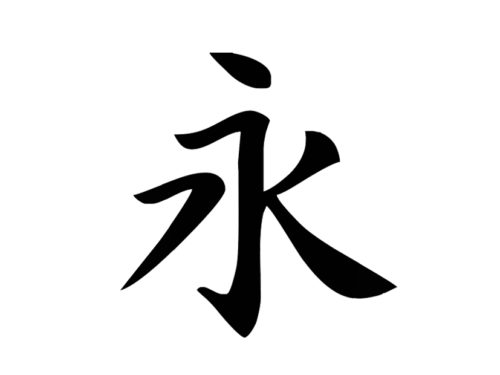

The Eternity symbol includes all eight elements of the classical character.
If you learn to write the character "jun" fluently and gracefully, you can consider yourself an experienced master.
Mother
Symbol-image of a nursing woman, gave the basis for the character "Mother".


Modern businessmen use the pentagram as a fetish guarding a large financial investment.
The symbol means: "mommy", "nurse", "base".
The Wind
Historically, the hieroglyph "Wind" is a replica of the ancient pictograph "insect".
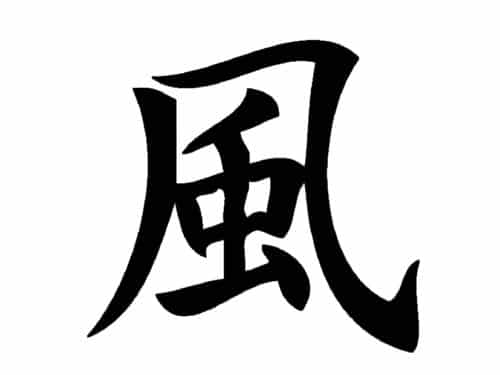

The "Wind" hieroglyph: the movement of air caused by the flapping of wings.
The sign (in combination with other symbols) can have many meanings: "wind", "breath", "manner", "way".
Japanese characters for men
Representatives of the stronger sex like tattoos that evoke associations with strength and courage.
Therefore, the following Japanese symbols are a common choice for tattoos among men:
- fire;
- wind;
- victory;
- strength;
- samurai;
- warrior;
- courage;
- honor;
- spirit;
- independence.
Such as:
- dragon;
- tiger;
- bear;
- wolf.
The most labor-intensive sign
In 2006 the Chinese Academy declared: the most difficult symbol of the Celestial Empire is "steaming dragon".
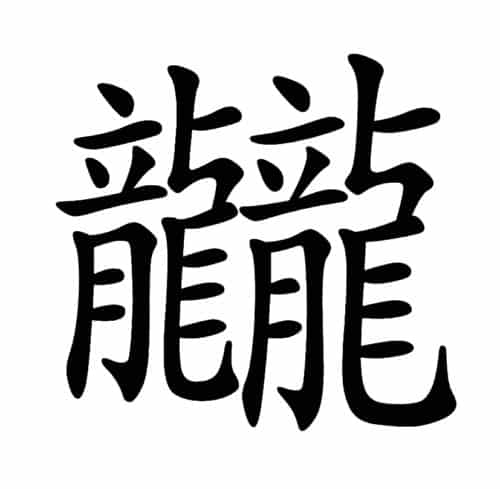

The complicated character: "steaming dragon".
This has caused an explosion of controversy: in Chinese there is an absolute "complicated" leader - the pentagram denoting a type of noodle.
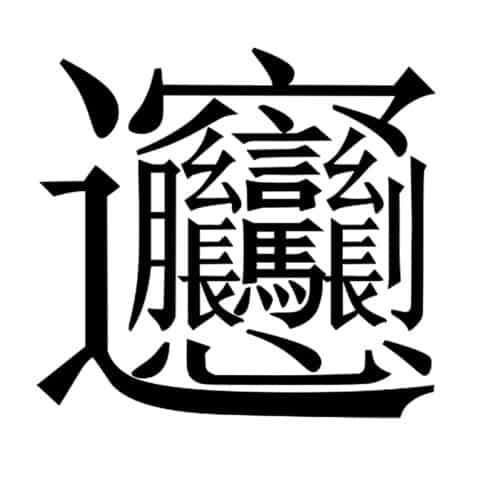

This sign consists of 62 brush strokes. Shaanxi province noodles.
But linguists have explained that the noodle symbol carries no deep meaning and cannot be widely practiced in the language. "Steaming dragon" continues to top the list of "complex" signs.
Mystical Hieroglyphics
Japanese signs that signify a worldview, a way of life, and mystery are in demand in tattoo parlors.
Such as:
- Karma - according to Buddhist philosophy, it depends on what actions the wearer has done, righteous or sinful.
- Eternity - in its outline this character is very similar to the sign "water" due to the fact that the Japanese personified its flow with the passage of time.
- Eternal wandering - this phrase consists of four characters, in which the sign of eternity is also based on the symbol of water. At the very bottom of the inscription there is a red calligraphic stamp of the author.
- Void is quite a richly semantic character, despite the first impression of the meaning of this word. It denotes attachment to illusory things, which have no real value.
The most enigmatic symbol
As the basis of tradition, "Fu" interprets the residents of the Celestial Empire basic values of everyday life. The mysterious, inscrutable symbol reflects the meaning of "right" existence.
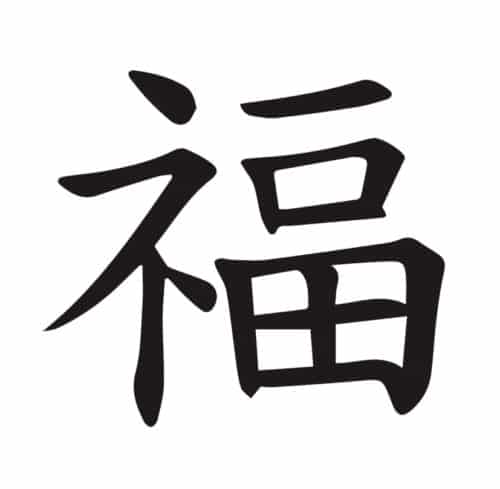

In China and Japan, entire scientific treatises are devoted to Fu.
When a person honors the moral principles sent by Heaven and worships the Gods, he is given a home and food. This is happiness.
How is a tattoo done, how long does the procedure take?
Immediately at the beginning of the procedure the skin is treated with a special disinfectant (solution or gel). Next examines the local anesthesia - an aerosol is sprayed on the skin. Then the drawing from the sketch is transferred to the area of the body with a special paper.
Working time depends on the complexity of the image, the number of characters, the style of graphics. Is stipulated with the master in advance and the need for additional anesthesia. Tattoo do quickly. The procedure is performed with a special machine with thin disposable needles. Caps for the paints are also used once.
The master must wear sterile gloves!
